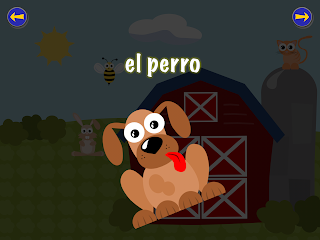This week we read about social interaction in online learning and watched an
interview with Dr. Dixon, a German professor, teaching German online.
The interview with Dr. Dixon was really interesting because he pointed out different ways of interacting in online environments. Besides flipping his German class, he uses different social networks such as facebook to increase the social interaction among students. It makes sense to me that social networks can enhance the learning of a language because it allows students to use the language in the context of communicating with other speakers of the same language. This communication, however, if not mediated by the learning goals of students, could not be as beneficial as it appears to be. The social interaction as a learning task in an online language class should have a real or genuine communicative purpose for the student and it needs to be at his/her level so that they can have a sense of accomplishment. Students are already using these social networks to communicate with friends and family, however I wonder if they are willing to use it for educational purposes. In this regard, studies like the one by Blattner and Lomicka (2012),
Facebook-ing and the social generation: a new era for language learning, can offer some insights about the use of social networkings in language learning.
The question then is how to promote effective interaction in an online class. I have never taught an online class, but I am familiar with the online Spanish classes at my university. Students interact with content through a commercial e-textbook, interact with other students and the instructor using platforms such as Elluminate, wimba tools, etc. It seems to me that this kind of interactions are not enough. If we consider the
strategies for incorporating interaction suggested by the Academic Technology Center of WPI, it is obvious that we, language teachers, can do much more to improve online language education. I like the idea of having student participate in online simulations. In this sense, I think virtual environments such as second life could help. A Spanish professor, here in Arizona, has created a virtual place in second life, Mi casa es su casa, where his students interact with vocabulary and forms in simulated real life place.
Also, in Hawai'i, Dr. Gonzalez-Lloret has used the task-based language teaching approach to create a virtual environment "En busca de Esmeraldas" that allows students to perform tasks such as "giving directions" and tasks where the language is used for specific purposes such as in the health professions. You can learn more about the application of technology in TBLT in this
youtube presentation.
In sum, it is clear to me that the kind of interactions provided in online learning environments can increase the motivation of students and their participation in the course. Language learning students are not the exception. They need to see what they can do with the language more than what they know about the language in any kind of learning context: face-to-face, blended or online.













